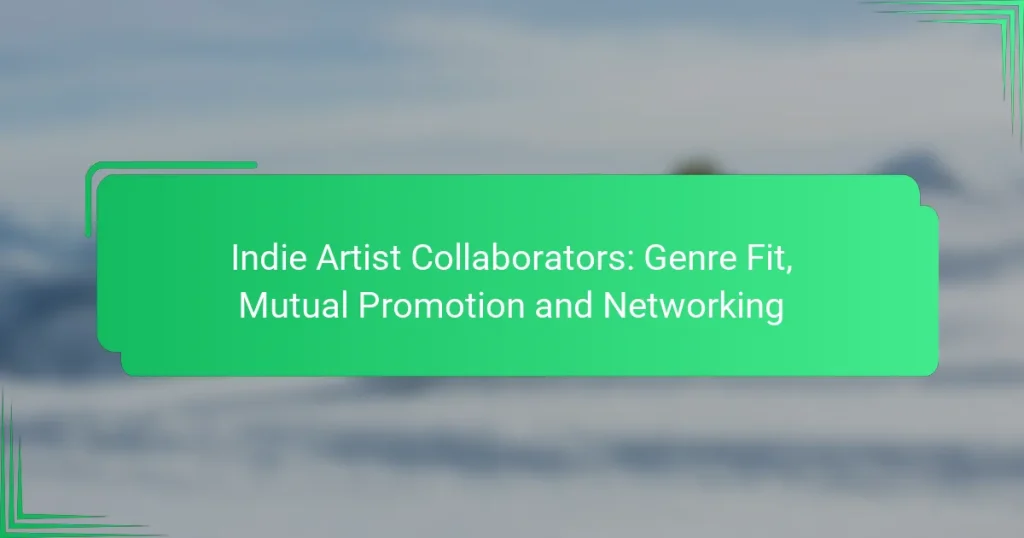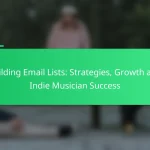Indie artists can significantly benefit from collaboration by aligning their goals, ensuring genre compatibility, and employing mutual promotion strategies. By working together, they not only enhance their creative output but also expand their audience reach and visibility within the music industry.
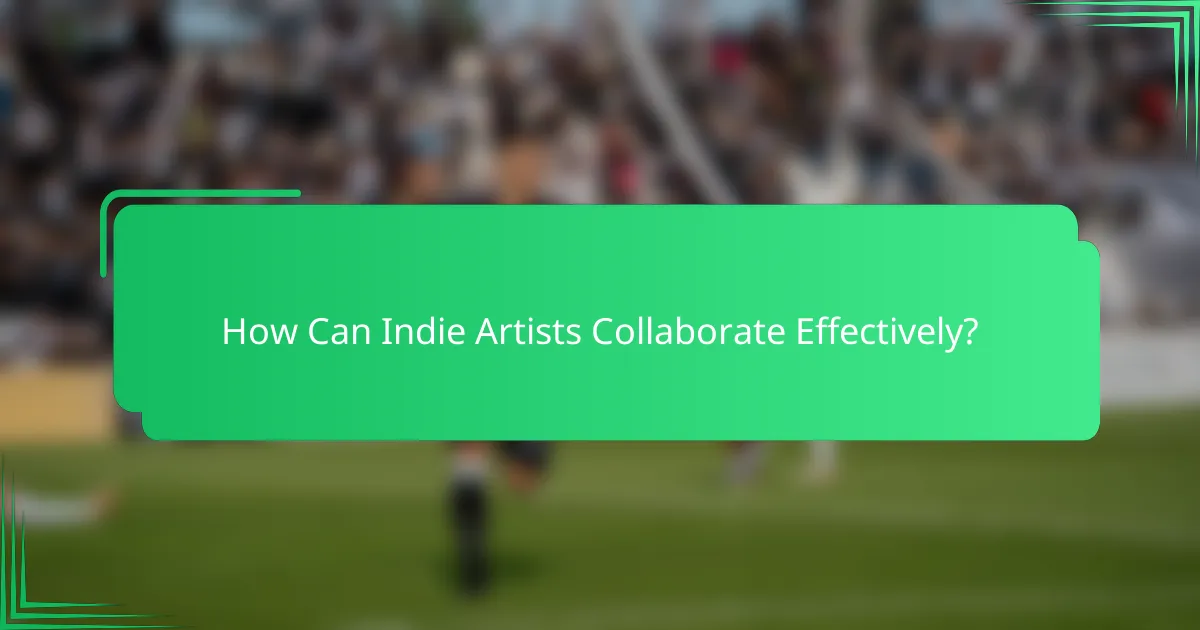
How Can Indie Artists Collaborate Effectively?
Indie artists can collaborate effectively by focusing on shared goals, genre compatibility, and mutual promotion strategies. Successful collaborations often lead to increased visibility and a broader audience for all involved artists.
Collaborative projects
Collaborative projects involve artists working together on a specific piece of music or an album. This can include co-writing songs, producing tracks, or even creating visual art for album covers. When selecting collaborators, consider genre fit and artistic vision to ensure a cohesive final product.
For example, two artists from different genres might blend their styles to create a unique sound, appealing to both fan bases. It’s essential to establish clear roles and responsibilities early on to avoid misunderstandings and ensure a smooth workflow.
Joint performances
Joint performances allow indie artists to share the stage, attracting larger audiences and enhancing their exposure. These events can range from small local gigs to larger festivals, where multiple acts perform together. When planning a joint performance, coordinate schedules and promotional efforts to maximize attendance.
Consider creating a themed show that highlights the strengths of each artist, which can make the event more appealing. Additionally, cross-promoting on social media platforms can help reach a wider audience and encourage fans to attend.
Shared resources
Sharing resources can significantly reduce costs and improve the quality of projects for indie artists. This can include pooling funds for studio time, sharing equipment, or collaborating on marketing efforts. Establishing a clear agreement on how resources will be shared is crucial to prevent conflicts.
For instance, artists can form a collective to share rehearsal spaces or even split the costs of hiring a professional sound engineer. By leveraging each other’s strengths and resources, indie artists can enhance their creative output while minimizing expenses.

What Genres Are Best for Collaboration?
Collaborating across genres can enhance creativity and broaden audience reach. Folk and acoustic, hip-hop and R&B, and electronic and pop are particularly effective genres for collaboration due to their diverse fan bases and complementary styles.
Folk and acoustic
Folk and acoustic music often emphasize storytelling and emotional connection, making them ideal for collaboration. Artists in these genres can blend their narratives, creating rich, layered compositions that resonate with listeners.
When collaborating in folk and acoustic, consider co-writing lyrics or harmonizing. This genre thrives on authenticity, so ensure that both artists’ voices are represented genuinely.
Hip-hop and R&B
Hip-hop and R&B collaborations can produce dynamic tracks that appeal to a wide audience. The rhythmic and lyrical interplay between artists can create engaging music that showcases both styles effectively.
For successful collaborations in this genre, focus on complementary beats and vocal styles. Collaborators should also leverage social media for mutual promotion, as both genres have strong online communities.
Electronic and pop
Electronic and pop music often feature catchy hooks and production techniques that lend themselves well to collaboration. Artists can experiment with sounds and styles, resulting in innovative tracks that push genre boundaries.
When working together in these genres, prioritize clear communication about artistic vision and production roles. Collaborators should also consider cross-promotional strategies, such as featuring each other in music videos or live performances, to maximize exposure.
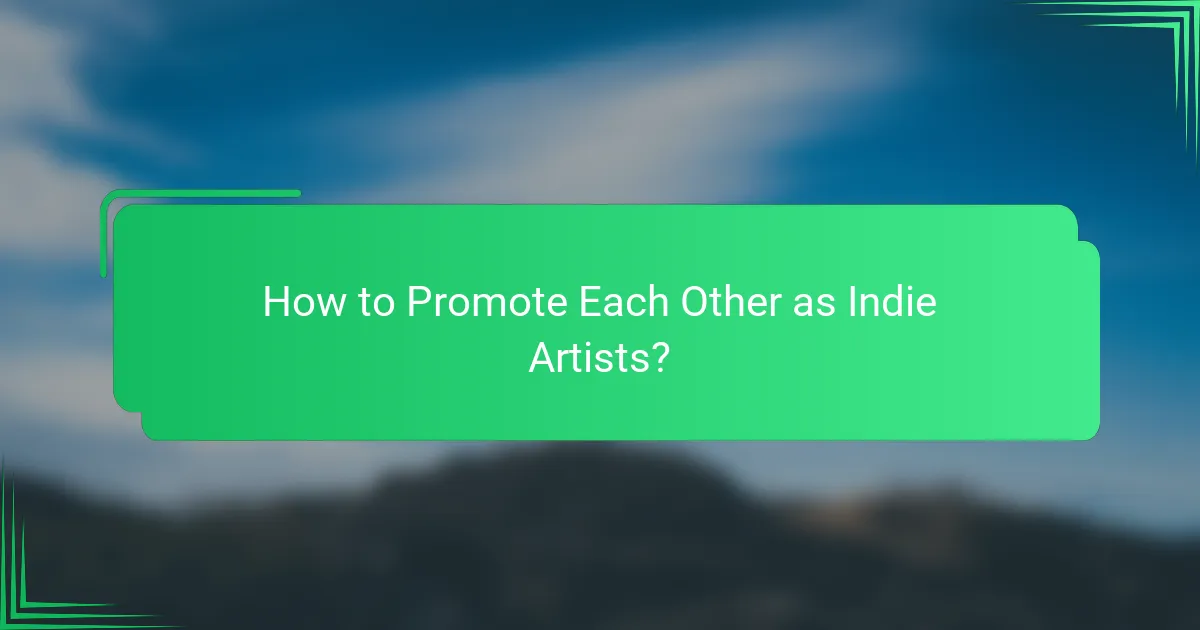
How to Promote Each Other as Indie Artists?
Indie artists can effectively promote each other by leveraging their networks and resources. This mutual support can enhance visibility, expand audiences, and create collaborative opportunities.
Social media shoutouts
Social media shoutouts involve artists sharing each other’s content on platforms like Instagram, Twitter, or Facebook. This can include tagging each other in posts, sharing stories, or creating joint live sessions to engage followers.
When giving shoutouts, ensure that the content aligns with your brand and resonates with your audience. Highlight specific songs or upcoming events to provide context and encourage followers to check out your collaborator.
Cross-promotion on streaming platforms
Cross-promotion on streaming platforms means featuring each other’s music on playlists or recommending tracks to your listeners. This can be done through curated playlists on services like Spotify or Apple Music, where artists can include their collaborator’s songs alongside their own.
Consider creating a shared playlist that showcases both artists’ styles. This not only introduces your music to a new audience but also strengthens your partnership. Regularly update the playlist to keep it fresh and engaging.
Collaborative content creation
Collaborative content creation can take many forms, such as co-writing songs, producing music videos, or hosting joint events. Working together allows artists to blend their unique styles and reach broader audiences.
When planning collaborative projects, set clear goals and timelines to ensure a smooth process. Utilize platforms like YouTube or TikTok to share behind-the-scenes content, which can generate excitement and engagement from fans.

What Networking Strategies Should Indie Artists Use?
Indie artists can enhance their visibility and opportunities by employing effective networking strategies. Building connections within the music community can lead to collaborations, mutual promotion, and increased exposure.
Attend local music events
Participating in local music events is a vital strategy for indie artists to network. These gatherings provide opportunities to meet fellow musicians, industry professionals, and potential fans face-to-face, fostering genuine relationships.
Consider attending open mics, showcases, and festivals in your area. Engaging with others in your local scene can lead to collaborations and support from those who understand the regional music landscape.
Join online music communities
Online music communities offer a platform for indie artists to connect with others globally. Websites and forums dedicated to music allow artists to share their work, receive feedback, and collaborate on projects.
Platforms like Reddit, Facebook groups, and specialized music forums can be valuable resources. Actively participating in discussions and sharing your music can help you build a network of like-minded artists and fans.
Utilize industry networking platforms
Industry networking platforms are designed specifically for music professionals to connect and collaborate. Websites like LinkedIn, SoundBetter, and ReverbNation can help indie artists find collaborators and promote their work effectively.
Creating a strong profile and engaging with others on these platforms can lead to valuable connections. Be proactive in reaching out to other artists and industry professionals, and consider offering your services or expertise in return for collaboration opportunities.
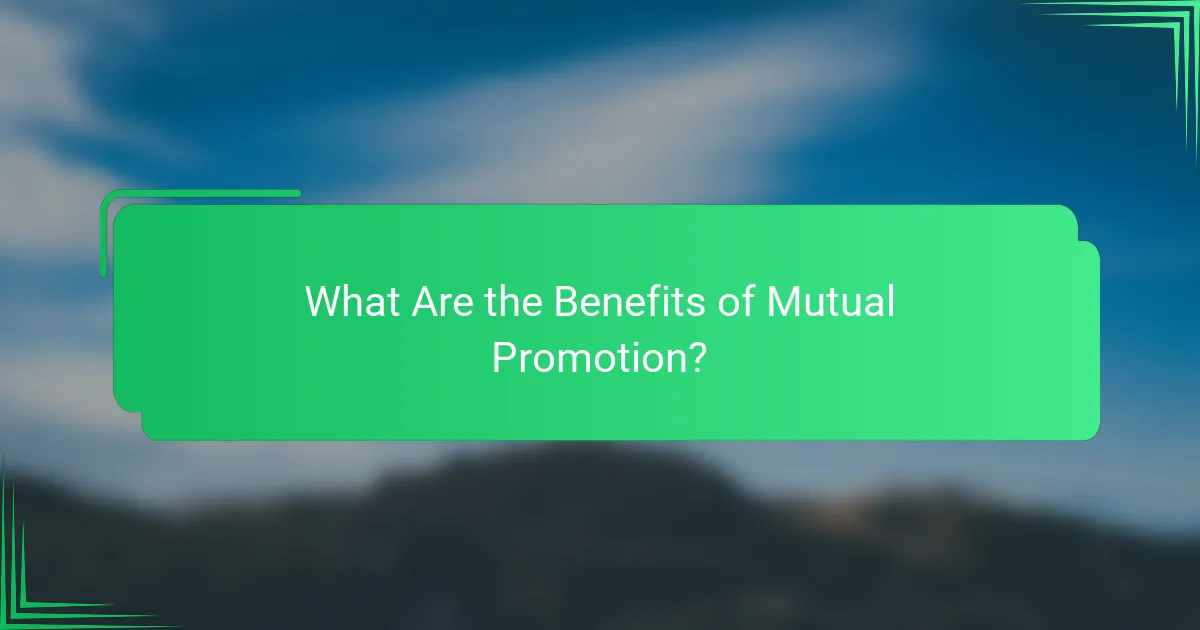
What Are the Benefits of Mutual Promotion?
Mutual promotion among indie artists offers significant advantages, including expanding audience reach, enhancing credibility, and sharing marketing costs. By collaborating, artists can leverage each other’s fan bases and resources to achieve greater visibility and success.
Increased audience reach
Collaborating with other indie artists allows for a broader audience reach, as each artist introduces their fan base to the other. This can lead to a substantial increase in followers, listeners, or attendees at events.
For example, if two artists with 5,000 followers each collaborate, they can potentially reach 10,000 unique listeners through cross-promotion. Utilizing social media platforms, email newsletters, and live events can maximize this effect.
Enhanced credibility
Mutual promotion can enhance an artist’s credibility by associating them with other respected musicians. When fans see their favorite artists collaborating, it can create a perception of quality and trustworthiness.
For instance, if an emerging artist partners with a more established musician, the newer artist may gain instant recognition and respect within the industry. This can lead to more opportunities, such as gigs, interviews, and features in music publications.
Shared marketing costs
Sharing marketing costs is a practical benefit of mutual promotion. By collaborating, artists can split expenses related to advertising, promotional materials, and event organization, making it more affordable for both parties.
For example, if two artists decide to co-host a concert, they can share venue rental fees, promotional costs, and even merchandise production. This approach not only reduces financial strain but also encourages creative marketing strategies that can attract larger audiences.
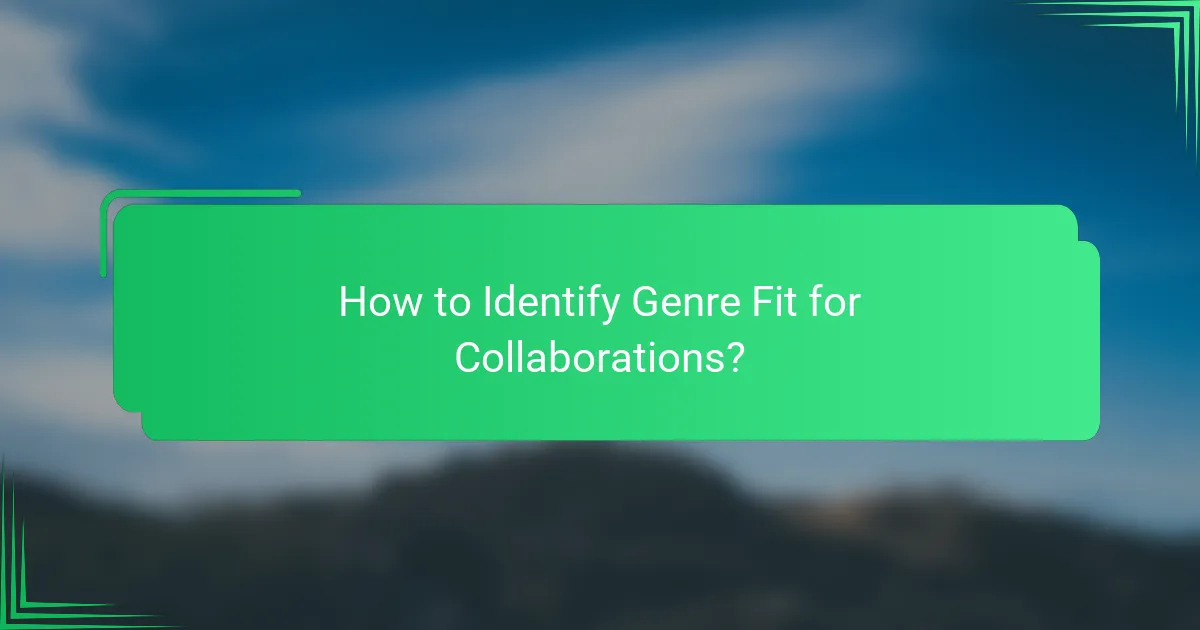
How to Identify Genre Fit for Collaborations?
Identifying genre fit for collaborations involves assessing the musical styles and influences of potential partners to ensure compatibility. This alignment can enhance creativity and audience reach, making the collaboration more effective.
Evaluate Musical Styles
Start by analyzing the musical styles of potential collaborators. Listen to their tracks and identify key elements such as tempo, instrumentation, and vocal style. This will help you determine if their sound complements your own.
Consider creating a short playlist that includes your music alongside theirs. This can provide a clearer picture of how well the genres mesh and whether they create a cohesive listening experience.
Consider Audience Overlap
Understanding the audience demographics of both artists is crucial. Look for similarities in age, location, and musical preferences, as this can indicate potential for mutual promotion and engagement.
Use social media analytics tools to gauge audience interactions and preferences. If both artists share a significant portion of their fanbase, the collaboration is likely to be more successful.
Network Within Genre Communities
Engaging with genre-specific communities can help you find suitable collaborators. Attend local music events, join online forums, and participate in social media groups dedicated to your genre.
Building relationships within these communities can lead to organic collaboration opportunities. Reach out to artists whose work resonates with you and propose collaboration ideas that highlight both of your strengths.
